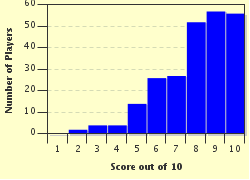Quiz Answer Key and Fun Facts
1. One of the pioneering giants of French cinema was nearing the end of his prolific career in 1910, though he directed nearly a dozen short films released in that year, including "Si j'etais roi" and "L'homme aux mille inventions". Who was this director, producer, actor, cinematographer and more, who had been in the business since the 1890s?
2. Another director working in France just before WWI was Leonce Perret, who was a pioneer of the split screen technique. In "Sur la voie" (1913) he used split screens to show the villain's thoughts, and thus his motive for murder. How did Jacques plan to dispose of his victim Pierre?
3. Moving into the 1920s, full length features became more frequent, and one such was "Visages d'enfants" ("Faces of Children") (1925). Directed by Jacques Feyder, it told the story of a young boy who could not come to terms with his father's remarriage after the death of his beloved mother. He took out his grief and anger on his new stepsister, but later regretted his actions. Who was the young actor who played the boy?
4. In 1928, directors Jean Renoir and Jean Tedesco filmed an adaptation of a story by Hans Christian Andersen as a forty-minute short subject. What sad tale, for which Andersen shared writing credit with Renoir, did they tell?
5. The romantic drama "Maria Chapdelaine" (1934) directed by Julien Duvivier and starring Jean Gabin, was set not in France, but in another French-speaking part of the world. Where was it set?
6. Jean Renoir's classic anti-war film "La Grande Illusion" (1937) was largely set in which type of place?
7. "L'assassinat du Père Noël" (1941) was not a typical Christmas movie, given that the murder of Father Christmas/Santa Claus was central to its plot. Children discovered the body in their Alpine village, but for what reason did the townspeople have to solve the mystery without police help?
8. Not to be confused with the 1958 musical of the same name, and based on the same novel, the 1949 romantic comedy "Gigi" was directed by whom?
9. What 1951 film, directed by Claude Barma, was based on a comedic play written by Georges Feydeau in 1896?
10. During what major French holiday did much of the action of "La fête à Henriette" (1952) take place?
Source: Author
spanishliz
This quiz was reviewed by FunTrivia editor
agony before going online.
Any errors found in FunTrivia content are routinely corrected through our feedback system.

